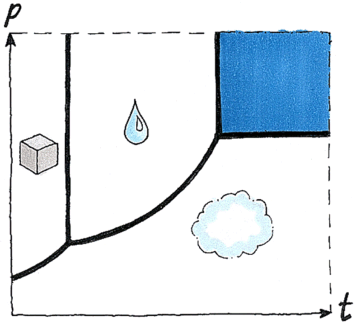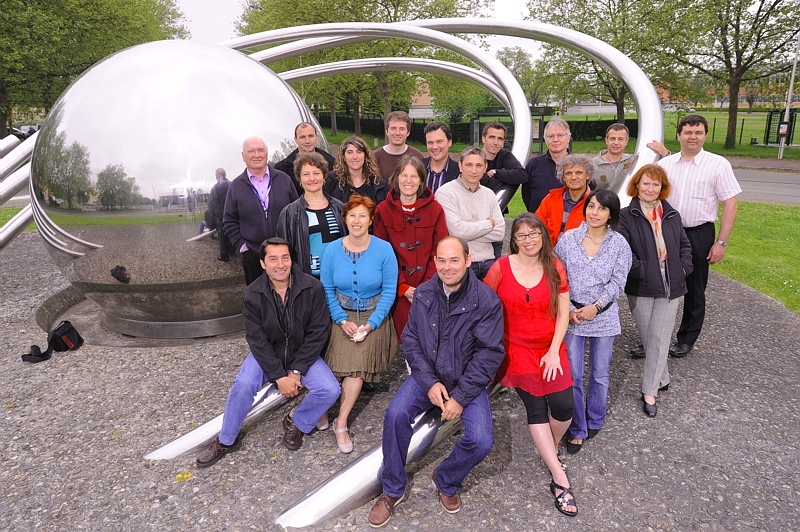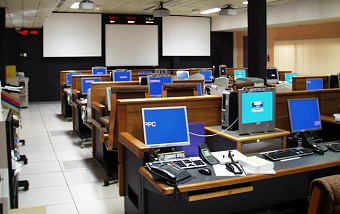373.995°C, the critical temperature of water

373.995°C. Above this temperature, water under pressure (1) becomes supercritical water—in other words it has the properties of both a liquid and a gas.
The precise value of this critical temperature was determined thanks to the DECLIC (2) laboratory on the International Space Station.
“The absolute measurement will need to be further refined, but this is a first in microgravity conditions,” says Gabriel Pont, DECLIC mission leader at CNES.
On Earth, such observations would have been impossible, due to the effects of gravity.
“As this critical temperature is approached, water collapses under its own weight and stratifies,” explains Bernard Zappoli, who heads CNES’s materials science programme. “Consequently, the medium is no longer homogenous, so we were unable to determine the critical point with any degree of precision.”
Here are two DECLIC images. The image on the left, obtained at ambient temperature, shows the gas bubble (white circle at the centre) trapped inside the water. The black circle is the meniscus (in a glass of water, for example, this is the tiny quantity of liquid that tends to creep up the side of the glass). The image on the right, obtained above the critical temperature, i.e. in supercritical conditions, shows that there is no longer any interface between the liquid water and gaseous water. Credits: CNES/CEA/CNRS.

CNES’s science mini-laboratory on the ISS supports research into the use of supercritical water for the green combustion of household and industrial waste on Earth. Credits: CNES.

Research, led by scientists at CNRS (3) and CEA (4) in France, is thus conducted at an altitude of 400 km.
“In the first trials, we were unable to achieve a homogenous temperature in the water cell,” explains Gabriel Pont.
“But with the help of scientists and the operational team at CADMOS (5) in Toulouse, which manages the experiments from the ground, we resolved this problem.”
Water for green recycling of waste

With DECLIC’s HTI module (High Temperature Insert), scientists have thus been able to monitor changes in a bubble of water vapour surrounded by liquid water.
This is an ideal way to determine the precise point and temperature at which water changes state. “The disappearance of the bubble shows that the liquid and gaseous phases no longer coexist. In other words, it marks the transition to the supercritical state,” continues Gabriel Pont.
Researchers are interested in supercritical water because we still know very little about this intermediate state of matter, yet it offers real promise.
An example? Supercritical water is able to dissolve and “combust” organic waste highly effectively, without emitting any pollutants.

“But before we can study these so-called “cold combustion” phenomena, we first needed to characterize the physical properties of water close to its critical temperature,” adds Bernard Zappoli. “In the near future, we will also study how salt behaves in supercritical water—a scenario found on the ocean floor along the mid-ocean ridge system.”
In the next few weeks, scientists expect to learn more about critical boiling phenomena and the solidification of transparent materials, thanks to the other two DECLIC modules, recently delivered to the ISS.
(1) At a pressure of 220 bars, in other words 220 times atmospheric pressure
(2) DECLIC: Dispositif d’Etude de la Croissance et des LIquides Critiques
(3) CNRS: French national scientific research centre (ICMC institute of condensed matter chemistry in Bordeaux)
(4) CEA: French atomic energy agency (INC institute of nanosciences and cryogenics / SBT low temperature research unit)
(5) CADMOS centre for the development of microgravity applications and space operations
